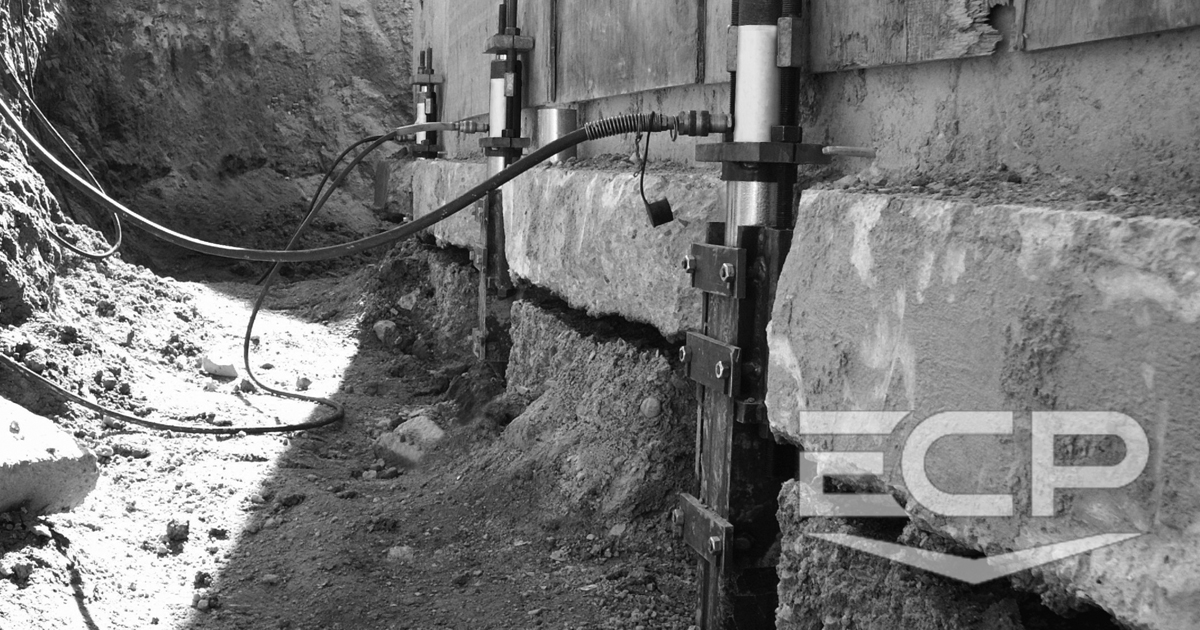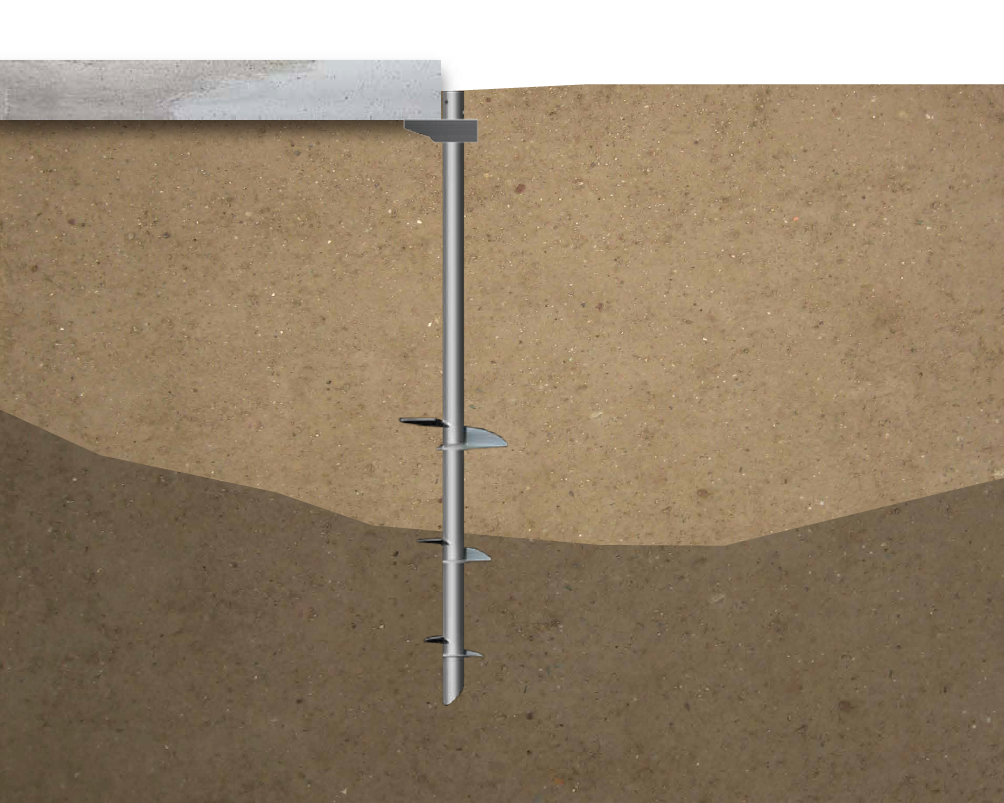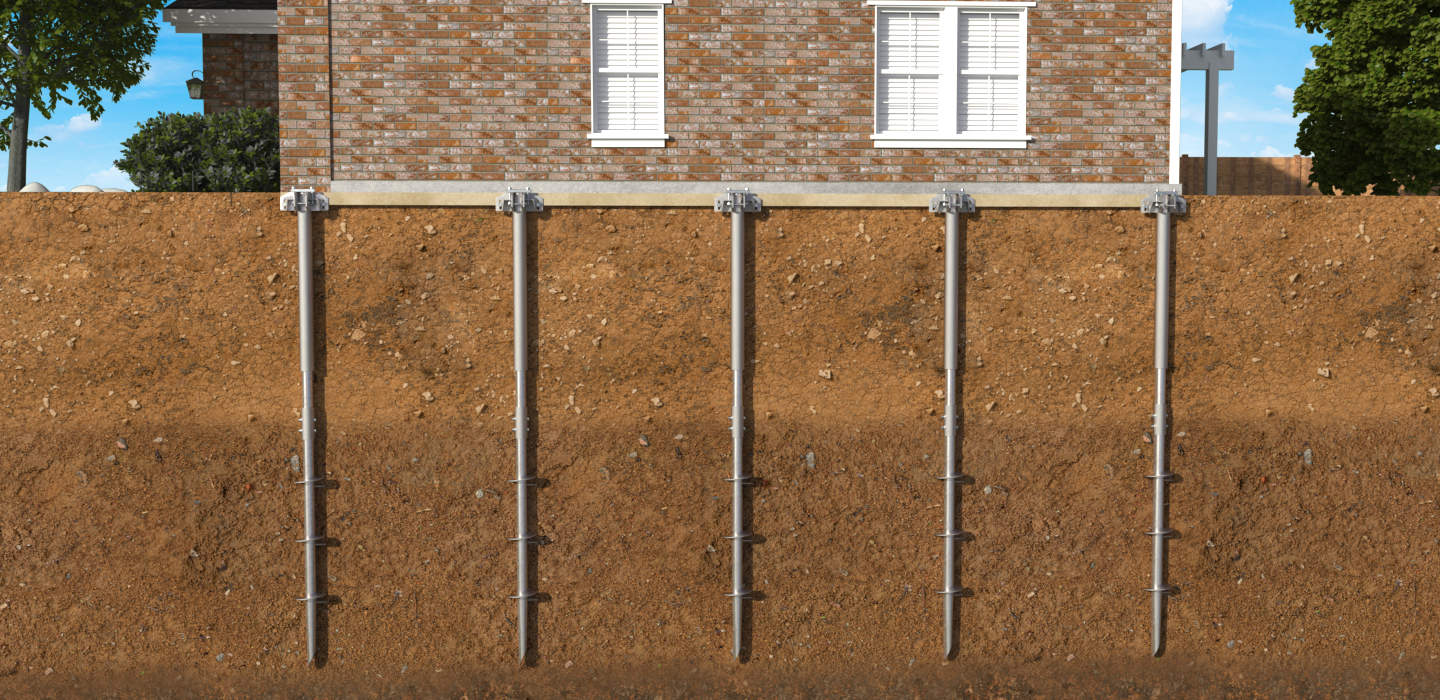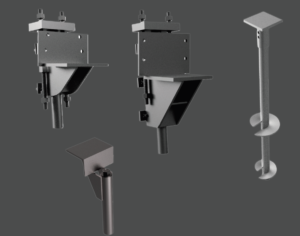
In this guide, we’ll cover all the essentials on helical piers—how they’re made, how they work and why they are often the smartest choice for your project.
Helical piers – getting a handle on the basics
First, it helps to get up to speed on the common trade names or accompanying products that you might run across when you’re looking into helical piers. Depending on who you ask, and whether you’re talking to a manufacturer or a local installer, you might hear different names for the same or complementary products:
-
Helical Piers
-
Screw Piers
-
Helical Piles
-
Screw Piles
-
Ground Anchors
-
Screw Anchors
No matter what the trade name might be, helical piers have been working on the same principle for at least 100 years. Imagine trying to lift a heavy piece of furniture by yourself. It’s an unstable and possibly risky operation, but the same lift is easy when you share the load with a few friends.
That’s an oversimplified way to illustrate how helical piers work. Steel disks arranged in an engineered “helical” pattern around a central shaft spread the weight of a structure across much more surface area than simple pilings or grade beams. The more stable soil you have holding up a foundation, the more stable the structure is going to be.
The invention of the helical pier is credited to a man named Alexander Mitchell. Born in Ireland in 1780, his work as a brickmaker inspired him to create some clever machinery to help simplify and automate the hard manual labor. He developed the screw pile to overcome problems raising lighthouses in sandy, muddy marine environments. The solution was so successful that he patented the idea with his sons, leading to installations all over the world in the mid to late 19th century. Fast-forward to today and improved versions of the original helical pier concept remain the best way to support the foundations in new construction projects on or near water-saturated soils.
Specialized manufacturers (such as Olshan’s partner, Earth Contact Products) have improved helical pier technology over the years, dramatically boosting reliability while cutting costs and simplifying installation. Advances in hydraulic construction equipment from the 1960s to the present have made installation easier, faster and less disruptive to occupied properties. Reputable civil and structural engineers now routinely specify helical piers to provide deep support for both new and existing foundations in all kinds of residential, commercial, and industrial structures.
How helical piers differ from other foundation technologies
Helical piers are fundamentally different from old-school poured or driven piles because they distribute the foundation load instead of concentrating it on just one bearing point. While it’s true that a driven pile can rest on bedrock if it’s installed correctly, it can shift out of plumb over time and lose its bearing strength. Rather than providing just one supporting contact point, helical piers are much more stable because they contact the earth in multiple locations, distributing the foundation load over a vastly greater surface area.
At the most basic level a “helical pier” is an earth anchoring device designed for deep foundation support. A helical pier has one or more metal discs or “bearing plates” that are welded in a spiral pattern around a rigid central core. The load from the foundation is passed from a connection point to the shaft, from the shaft to the discs, and from the discs to the surrounding soil. The depth of the central support and the diameter and spacing of the bearing plates is determined by the local soil type and by the specs of the foundation you need to support. Helical piers can also be customized for any site requirements.
The diameter of the bearing plates that are welded onto the central pin will vary depending on the soil type where they’re being installed. Rocky soils (like those in Colorado) generally call for smaller diameter discs, while soft or sandy soils (like those in Coastal Texas) demand larger ones. Helical piers are made of steel and may be hot-dip galvanized. To prevent corrosion from underground chemical reactions, some designs use “sacrificial” anodes – bits of metal that are attached at engineered points to draw the corrosive action away from objects you want to protect.
The best applications for helical piers – residential and commercial

Deep penetrating helical piers can be used to support foundations in new construction projects
Now that you have a little more background on helical piers and how they work, it’s easy to see how versatile they are for all kinds of building applications. They were originally developed to support structures above weak or wet soil, and are ideal for protecting foundations from just about any kind of unstable or shifting soil. Engineers have commonly recommended helical piers for decades to both repair and stabilize foundations for all types of commercial and residential structures. They also often specify helical piers for new construction as well.
Chris Cates, a top foundation repair expert at Olshan Foundation Repair says, “We use helical piers for new construction projects because they’re easy to customize for any soil conditions and they’re minimally disruptive to install. Because of their affordability and reliability, they also deliver unmatched cost benefit for industrial and commercial projects. The top engineering consultants we work with now routinely specify helical piers for most types of new construction. They dramatically extend the life and stability of any foundation, and importantly, allow builders to confidently construct new projects on nearly any type of soil.”
Ask a structural engineer about the advantages of helical piers and talk with a reputable installer before your next construction or industrial foundation repair project.
Here are just some of the settings where helical piers are ideal:
-
Install during site preparation to ensure that all foundation components are fully supported, no matter what your local soil conditions might be.
-
Use helical piers when adding on to commercial or residential properties.
-
Consider helical piers to support auxiliary structures and slabs – such as outbuildings, sheds, patios, mezzanines, balconies, garages, pole barns or parking covers.
-
Ensure stable and long lasting spot repairs by using non-invasive helical piers on existing foundations, or underneath sagging or tilted concrete slabs.

Helical piers used for residential foundation repair
In all of these applications and more, helical piers offer a number of compelling advantages.
-
Helical piers can be loaded immediately after installation—no cure time.
-
Faster and cheaper to install than older, less reliable technology.
-
Ideal for unstable topsoil or areas with high groundwater levels.
-
Multiple bearing plates contact the soil across more surface area for greater stability.
-
Reliable for structures subject to above average seismic or wind exposure.
-
Suitable for environmentally sensitive or protected areas.
-
Each pier is load tested and precisely configured for your exact soil requirements.
-
Far less excavation and site disruption than old-school driven piles or cast-in-place alternatives.
When you want a foundation solution that prevents shifting and ensures stability in any type of soil—rocky, sandy, muddy or mixed—helical piers give you a flexible, affordable construction or repair option that you can trust. Remember that helical piers were invented to solve the most challenging foundation support problems in the harshest of environments. They’ve been continuously improved for over 100 years and they can be configured in virtually limitless ways to fit your budget and your individual site conditions. The way they distribute foundation loads across a greatly multiplied surface area means they can resist tension and compression from all directions and can be sized to firmly contact the most stable soil below your structure.
What are the costs of helical pier projects?
If you’ve been wondering about cost, a reputable installer will be transparent with you and show you how to plan around your budget constraints for the best result. Helical piers are normally priced by size. The size of the shaft will be determined by the structural load you have to support. The number, size and placement of the helical bearing plates will be determined by the stability and type of soil beneath your structure.
For a free cost estimate for your helical pier project, please contact us today.
Olshan has been providing honest, affordable, high quality work for commercial and residential property owners for over 90 Years.


